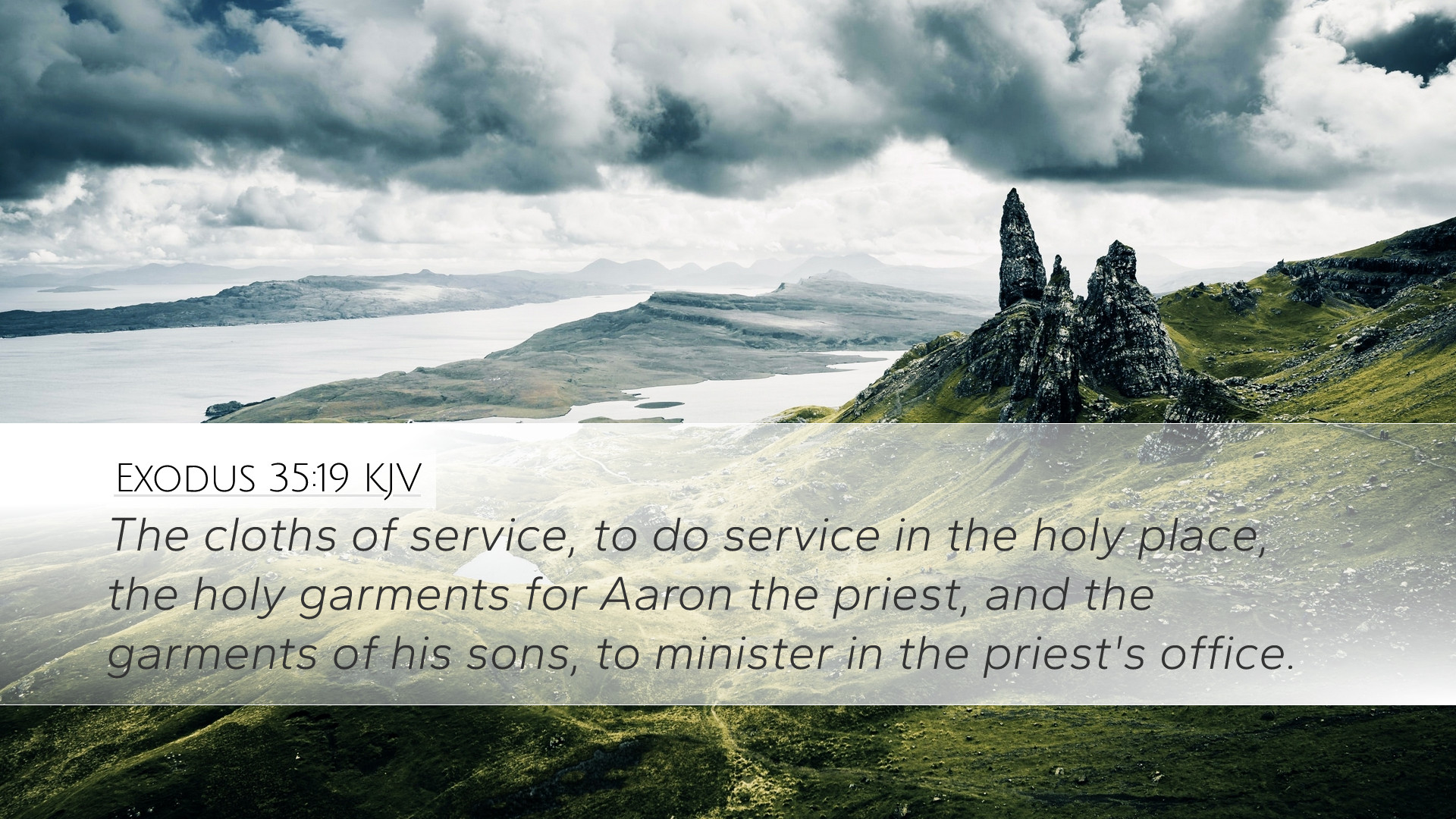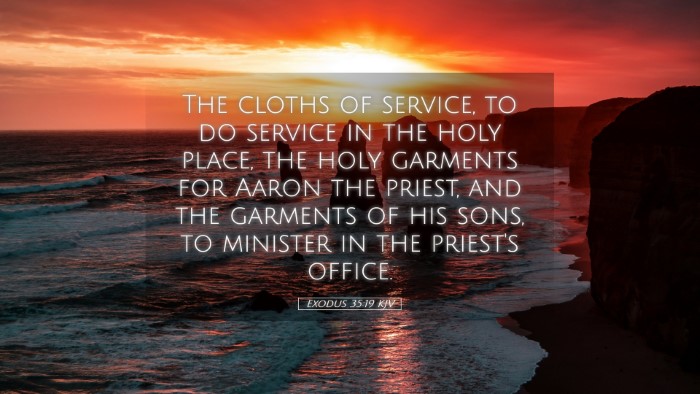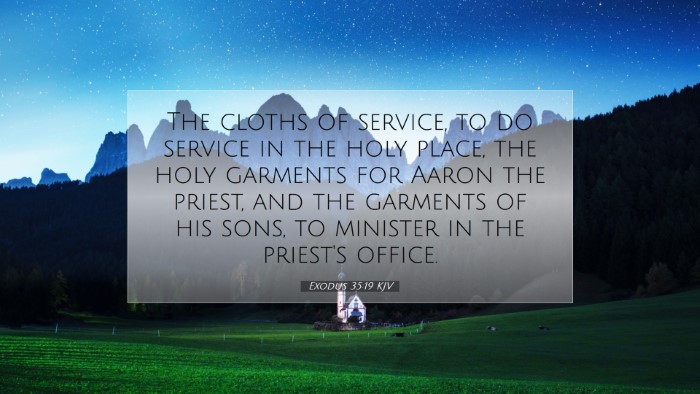Exodus 35:19 Commentary
Verse: Exodus 35:19 - “The cloths of service, and the holy garments for Aaron the priest, and the garments of his sons, to minister in the priest's office.”
Introduction
This verse is nestled within a broader narrative concerning the construction of the Tabernacle and the institution of priestly duties. The meticulous instructions given by God highlight the sacredness of the priestly office and the importance of preparation in serving the Lord. Public domain commentaries provide valuable insights that can enrich our understanding of the roles, responsibilities, and the symbolic significance of the garments associated with the ancient priesthood.
Insight from Matthew Henry
Matthew Henry emphasizes that the garments for the priests were not only functional but also deeply symbolic. They represented the holiness required to approach God. In Exodus 28, the Lord provides detailed instructions about these garments, underscoring their significance in conveying the dignity of the office. Henry points out that the priests were to bear the names of the children of Israel on their shoulders and over their hearts, symbolizing their intercessory role before God.
Henry further elaborates that the use of beautiful and costly materials reflected the glory of God and the reverence due to His service. The mention of “holy garments” suggests that holiness is a prerequisite for those who serve before God. The distinction between sacred and ordinary garments demonstrates the seriousness with which God views the worship and service rendered to Him.
Insights from Albert Barnes
Albert Barnes delves into the practical aspects of the priestly garments and their significance within the Israelite community. He notes that the “cloths of service” were indeed essential for the priests as they represented their authority and role within the worship system of Israel. Barnes highlights the fact that the garments were intricately designed and carefully crafted, emphasizing the principle that service to God should be done with excellence and attention to detail.
Moreover, Barnes points out that these garments served to sanctify the priests, marking them out as different from the laypeople. With their specific attire, the priests were visibly identified as those set apart for holy duties. This concept of separation is critical throughout the Scriptures, illustrating the ongoing theme that holiness is not only a divine attribute but is also a call for God's people to embody holiness in their lives and practices.
Insights from Adam Clarke
Adam Clarke approaches Exodus 35:19 by emphasizing the necessity of proper attire for ministerial duties. He suggests that the garments made for Aaron and his sons were not merely ornamental but integral to their function within the sacrificial system. Clarke indicates that each article of clothing served a purpose, reflecting the divine order in worship.
Furthermore, Clarke connects the clothing of the priests to the concept of spiritual covering. Just as the garments were required for the priests as they went about their duties, believers today are reminded of the need for spiritual preparation and covering in their service to God. Clarke insists that the nature of our service must reflect the character of God, not only in outward conduct but also in the condition of our hearts.
Theological Reflections
The deep theological implications of Exodus 35:19 remind us that God desires a relationship with His people that is marked by reverence, order, and holiness. The garments worn by the priests serve as a metaphor for the righteousness of Christ, which believers are clothed in. As the New Testament indicates (Ephesians 6:11-13), believers are called to “put on the whole armor of God,” symbolically representing the protective and sanctifying aspects of their faith.
- Representation: The garments symbolize the priest's representation of the people before God and God's presence among His people.
- Preparation: The call to prepare for service implies that worship requires intentionality and a heart aligned with God's will.
- Holiness: Holiness as a requirement affirms that accessing God's presence necessitates being set apart and cleansed from sin.
Practical Application
As we reflect on Exodus 35:19, contemporary pastors, theologians, and students can draw several practical applications:
- Emphasis on Holiness: In ministry, there must be a continual pursuit of holiness and a commitment to serving God with integrity and reverence.
- Preparation for Service: Investing time in spiritual preparation is essential, paralleling the physical preparation of the priests. This includes prayer, study of God's Word, and engaging in communal worship.
- Understanding Roles: Recognizing the importance of designated roles within the church context encourages respect for ordained leadership and a deeper understanding of function within the body of Christ.
Conclusion
Exodus 35:19 serves as a profound reminder of God’s call to holiness and the importance of preparation in fulfilling ministry roles. The insights from Matthew Henry, Albert Barnes, and Adam Clarke converge to illustrate that these garments were much more than mere clothing; they represent a deeper truth about the nature of our service to God. As we unpack the layers of meaning within this text, may we likewise strive to honor God through our lives, recognizing our own calling to be holy as He is holy.


